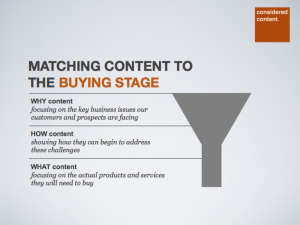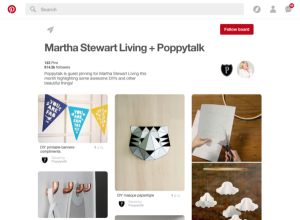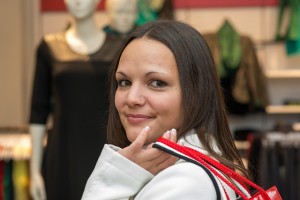
The Voice. Where the interviewers are choosing their candidates based on the skills needed for the job and not the image.
Diversity starts with leadership
Every company says they promote diversity and every company says that employees are their most important assets.
I just went through the job search process and I wanted to share my recent diversity experiences. Diversity doesn’t always come across the way you think it is and it surprised me in my recent search. What I encountered as it relates to diversity was a first.
As I reported in the last post, I recently joined a mid-sized technology company leading an HR department.
My initial contact with the company was with the CEO and it was a lot more of a relaxed conversation over coffee, than it was an interview. He explained the company, the technology, the role, and of course the company culture. I really appreciated that this was a 2-way conversation and not a “job interview”. We both had questions, we both had answers, and the CEO set a tone for two colleagues vs. adversaries writing salaries expectations on slips of paper and passing them back and forth. If you were sitting in the restaurant and saw us, you would have thought it was a business meeting between equals vs. an interview where there was a senior and a junior. The CEO is comfortable in his skin and he didn’t have to prove it by making sure I knew I was the junior. Needless to say, I liked his style and I liked the atmosphere that was created. I took the tone of that initial meeting as good indicator on the company culture that he had created.
So where does diversity come into the blog post?
There were a number of skills and experiences the CEO was looking for from the position. International HR experience, experience with both fast growth technology companies and larger corporate entities, experience managing a team, etc. He also mentioned that he wanted to “bring company awareness to the community”. My initial thought was that he was looking for someone with marketing experience but when I probed a little further, it turned out that he wanted to increase the companies visibility within the local community in an effort to attract candidates of diversity. In Seattle, we have a very diverse population but within the technology sector, the workforce does not always reflect the community. This is a common challenge that many technology companies of all sizes in the local face.
Larger companies in the area are not immune to the challenge of hiring for a diverse workplace. Microsoft, one of the largest employers in the state released a report earlier this year on their diversity within the workplace. The stats on their EEO1 report is here:
- 76% of the workforce is male
- 5% of the workforce is Hispanic /Latino
- 3% of the workforce is black
There is a great narrative and info graphic in Fortune magazine here.
The report describes low numbers to be sure, but as a minority that falls into two protected classes, I don’t fault Microsoft one bit. The resources that MSFT is throwing into their initiative to recruit diversity is herculean in my opinion and I respect them for it. The bottom-line is that although there is a lot of diversity in the Seattle area, it has only been in recent years that technology has had a chance to be impacted by a pool of diverse candidates. This is because it is only in the last few years that technology has begun to reach younger demographics in diverse groups. Of course this number will increase over time, and not just for MSFT but for the US as well. Exposure and accessibility to technology at a younger age will impact our future generations interest and proficiency at a later age. This early exposure will translate to increased diversity numbers within technology in the near future.
I believe there is a similar reason we don’t see a lot of diversity in professional golf and tennis. To make it to the professional level athletes need to have not just access and exposure to the facilities where these sports are played but role models to emulate. It is the same for technology. If you do not have access to a golf course or a swimming pool for 10 hours a week when you are younger, you probably are not going to have the hours needed make it to the professional level. We are now seeing role models in golf like Tiger Woods and Michael Chang in tennis. These were sports that didn’t traditionally see much diversity. In a similar fashion, more access, earlier exposure and role models in technology will increase future numbers.
As our initial meeting came to a close, the CEO explained next steps and took a few minute to set expectations for the rest of the process:
- He wanted to set up a second meeting to give me debrief on the leadership team. I explained that I wanted the team to meet me, as I am. I did not want them to hire something I am trying to be. They will either appreciate my style of HR or they won’t and I know I am not for everyone. If they hire someone who I am trying to be in the interview, neither of us would be happy in the long run.
- Although this is a mid-sized company, it is owned by a Fortune 100 company and because of the parent companies size and company initiatives, he needed to talk to at least three candidates and one of them had to be a minority.
Now, this is where the blog becomes a slippery slope. Some readers will be outraged that the CEO is required to talk with at least one minority. Some readers will wonder why he even has to mention this (He is transparent and I appreciate the style). Fair or not, right or not, I know there are minorities that appreciate the opportunity to interview where they may have been otherwise passed over for an initial interview. I also know there are minorities like myself that want to be hired on our own merits and want to be treated exactly like the other candidates.
My initial response to the CEO’s comment about 3 candidates and the requirement for a minority was, and I quote: “Yo dude, what am I? I am a minority and fall into 2 protected classes”. I would never say this in an interview with anyone I just met, but this CEO is a friend and we have history.
I was lured into Bro mode and my defenses were down during the interview.
Over the next three quarters of a second, I literally had all of the following thoughts run through my head.
Paranoid HRNasty: “SHIT! What did I just say? Even if it is only jokingly in Bro mode, the last thing I want to do as a minority candidate is bring up the “D” (diversity) word during an interview. I don’t want to scare any hiring company off with the fear that I am going to use the minority card to gain leverage or sue. HRNasty you are a dumbass. HRNasty, you are a dumbass!!! Why did you use the “D” word?
Cynical HRNasty: “Ahhh, I see why he is talking with me. He wants a minority in this role so he can hopefully recruit more minorities. What he really needs is a woman minority. I actually know a woman for him.”
Sad HRNasty: I had a flashback to my days back in corporate America where an office of 12,000 employees held a Diversity fair and assembled 100 minority employees to work the room that night and make candidates of diversity feel comfortable. We got a lot of candidates, but a total of 2 candidates of color showed up.
Pragmatic HRNasty: “There really are not that many minorities working in technology. The colleges do not have high percentages of female computer science majors “yet”. This is going to take time and it is going to be a claw.”
The CEO’s response:
“But you aren’t a minority. Well, I guess you are. I never thought of you as a minority.”
Optimistic HRNasty: I know I am a glass half full kind of a guy, but I was flattered. I do make an effort to be mainstream and have always tried to make an effort to fit into “corporate”. I am not trying to hide my ethnicity and I am not embarrassed of my background. But I like to think my look will fit into corporate America. Make no mistake, I encourage the mainstream white guys to adopt a corporate look as well. If we want to play in the leadership sandbox, we need to be accepted and “fit in”. We need to dress and act a couple of levels above our current position if we want to be seen in a larger role.
I was seriously stoked! I wasn’t being interviewed as a candidate of color. I wasn’t being interviewed as a candidate in a protected class. I was being interviewed as simply, “a candidate”. He was going to make a decision based on my skills and experiences and not on my look. This is even better than the singing competition television show, The Voice. The Voice, for those of you not familiar has 4 stages of completion. The first stage is a round of blind auditions where the judges listen to the talent with their backs to the stage. They are not able to see the talent. They are only able to make a decision on whether the contestant should move forward based on what they hear. Decisions are based on the skill being judged. Isn’t this what all of us want? Isn’t this what Dr. Martin Luther King wanted? To be judged by the content of our mind and not the color of our skin?
Diversity isn’t just about attracting candidates from all walks of life. Diversity is also the ability to look at all candidates for who they are and not what we think they appear to be. We can attract all the candidates of diversity we want, but if they feel they are being treated differently, it is all for naught. This mentality will attract candidates from all walks of life including the mainstream.
(249)






